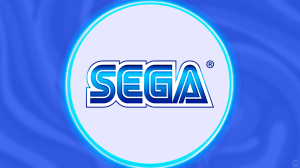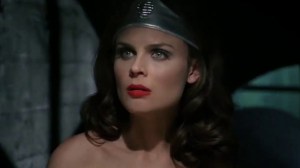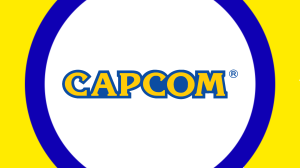With the Summer Olympic Games set for 2020 in Tokyo, there is excitement building for the inevitable battles that will take place on the water, the track, and in the gymnasium between opposing countries. Mario & Sonic at the Olympic Games Tokyo 2020 aims to capitalize on this anticipation while simultaneously bringing the series onto the Nintendo Switch for the first time. The latest release in the Mario & Sonic series does provide more accessibility and an ever-expanding roster of events, but it also suffers from controls that feel unresponsive at times.
Videos by ComicBook.com
The year is 2020, the setting is Tokyo, and the stage is set for another battle between video game mascots in the Olympics. There is one issue, however, as Toad, Mario, and Sonic are nowhere to be found. Similarly, Dr. Eggman and Bowser have disappeared as well. Without these top names available, there are concerns that the Olympic events may not take place, sending Luigi and Tails on a quest to crack the case before it is too late.
With this as the foundation of the story mode, Sega and Nintendo have partnered once again for another iteration in the Mario & Sonic at the Olympic Games series. The Nintendo Switch debut, which is set during the upcoming 2020 Olympics in Tokyo, pits 20 characters against each other in a series of events, such as karate, surfing, and skateboarding. However, there is an added twist. Instead of simply taking place in 2020, there is also a version of the Tokyo Olympics set in 1964, complete with NES-style pixelated graphics, music, and fade-to-black scene transitions. This setting adds another eight playable characters, including Sonic, Tails, Princess Peach, and Mario.
This plot device is achieved with a devious portable video game system created by Dr. Eggman. The longtime villain partners with Bowser in hopes of forever trapping Mario and Sonic within the system. However, both heroes and villains alike are transported inside — and back to 1964 — when they are all caught in its gravitational pull, so to speak. The only way to escape is to collect the most gold medals, which can only be achieved by completing the 10 events.

Mario & Sonic’s story plays out through more than a dozen chapters that alternate between the past and present. Bowser and Dr. Eggman compete against Mario and Sonic in 1964 while Tales and Luigi travel around the 2020 version of Tokyo in search of answers to this mystery of disappearing video game mascots. Both time periods feature a map that can be traveled to explore Tokyo, meet new characters, and find hidden pieces of trivia about the events and characters featured in the game. Some hidden trophies also reveal information about the actual 1964 Olympics that were held in Tokyo.
Ultimately, this story, which is downright adorable and endearing at times, only serves as a backdrop to what is just another collection of minigames. Traveling around the map and talking to the various characters – by way of text blocks instead of actual dialogue – is just a setup for what is another race, battle, or event. In all, there are 24 modern events that must be completed before finishing the story, as well as 10 in 1964. These are a mix of old events from past games and new additions. Boxing and rugby sevens were both in the Rio-themed game on the Wii U, but the BMX event from 2016 has been replaced by skateboarding.
To break up the string of athletic-themed events, the new Mario & Sonic also includes a series of 10 extra challenges that serve to drive the story along and open up new areas of the map. These are entirely separate from the Olympic-themed minigames and can be replayed in a separate Game Room in the menu. One forces Tails to shoot robots with arrows while another features Mario racing Bowser on a jet ski. There is even a stealth mission complete with patrolling guards and automatic failure upon detection.
While some of the main events, such as rugby sevens and surfing, provide moments of entertainment, the majority of minigames in this collection are largely forgettable. Boxing, table tennis, and badminton are enjoyable when played with another person, but the single-player versions just serve as an obstacle that must be cleared before seeing another cutscene. Some events, on the other hand, are just anger-inducing.
Floor gymnastics, in particular, requires hitting a series of buttons as quickly as possible in a quicktime event. The issue is that the left joystick on both the Joy-Con and an external controller never feels responsive enough for something that requires this level of precision. I failed this event a dozen times with multiple controllers despite having played other games in this series, as well as other quicktime-heavy series like God of War and Star Wars: The Force Unleashed on other consoles.
Fortunately, the events that become too frustrating or seem impossible to complete can simply be skipped after three failures. Doing so won’t affect the story in any way and actually leads to another scene in which the villain featured in that particular moment complains about how they keep losing. It’s fairly jarring to see Sonic villain Zavok make a fuss about how he was bested in an event that he actually won, but it does provide a sense of relief after seeing the same “mission failed” text over and over.
Once the story mode is complete, Mario & Sonic at the Olympic Games Tokyo 2020 does its best to keep players engaged by offering the ability to replay old events and try some new additions. Every minigame from the campaign is available via the main menu and offers the opportunity to play as other characters. There are also new Dream Events that are added to the story. For example, one of these postgame additions is a skateboard race that combines features from Mario Kart and Tony Hawk as characters collect rings and pull off tricks on a downhill course.
Additionally, there are three multiplayer modes available. Local Play allows up to three Switches to play together wirelessly while Online Play requires the Nintendo Switch Online subscription service, exactly as it sounds like, and there is a Quick Match mode that pits up to four players together on the same system. Separate controllers are required, of course. The new Mario & Sonic does allow the use of Joy-Cons, both single and dual, a Pro Controller, or the budget-friendly PowerA wired controller.
Make no mistake about it; Mario & Sonic at the Olympic Games Tokyo 2020 is a minigame collection. The nearly three dozen events will be more appealing to children and large groups than it will be to fans of story-driven games, but there is some enjoyment to be found when competing with others in the same room. The story, on the other hand, is adorable and features some surprising moments, especially in 1964. However, it pales in comparison to games such as Mario & Luigi: Bowser’s Inside Story, so perhaps don’t come to this looking for a satisfying narrative experience.
Ultimately, Mario & Sonic‘s latest outing is a largely forgettable game with some impressive polish, a few enjoyable minigames, and a wide array of popular characters from multiple franchises. It’s best played with friends, if at all, and is perfectly serviceable if not notable.
Rating: 3 out of 5
Mario & Sonic at the Olympic Games Tokyo 2020 is scheduled to release for the Nintendo Switch on November 5th. A code was provided by the publisher for the purpose of this review.








